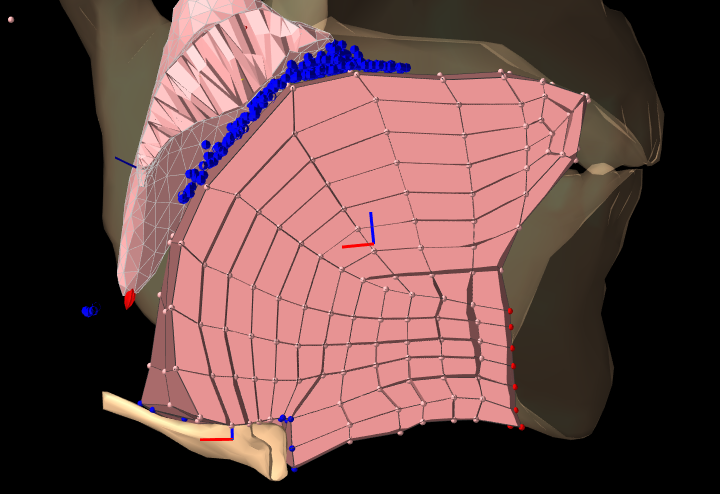Welcome to the Swallowing Project
A Computer Modeling-Based Approach to Studying Human Swallowing
Mission
Our mission is to create a dynamic, 3D, patient-specific computer models of oral and upper airway anatomy to predict functional mastication and swallowing outcomes for head and neck treatment and surgery including aspiration risk. Our predictions will optimize functional outcomes through simulation and design of surgery, surgical guides, prostheses, implant installation and post-operative treatment regimens.
Motivation
Current state-of-the-art geometric modeling provides only a static view, and does not predict functional outcomes, such as how effectively a patient will chew or swallow and whether they are at risk for aspiration. These outcomes enormously impact patients' quality of life, with swallowing deficits, i.e., dysphagia, producing significant risk of morbidity and mortality due to aspiration in patients undergoing these treatments.
Models Developed
- Jaw-Hyoid
- Tongue (data courtesy of Pierre Badin at GIPSA-Lab, Grenoble France)
- Combined Jaw-Tongue-Hyoid
Models Under Development
- Soft Palate
- Larynx
- Pharynx
The Swallowing Group
Our world-class interdisciplinary team of scientific and clinical investigators, collaborators and knowledge transfer users, have the proven clinical and technical expertise, track record and ability to work together for this project. Our collaborators at the University of Alberta Hospital will assess the clinic usage of the models and tools in parallel with three patients' treatments. Additional knowledge transfer partners include the 3D Medical Applications Department of the US Navy who will assess the models and tools on three trauma patients, McKesson Medical Imaging and ANSYS (finite element software) who can apply the results globally.
We gratefully acknowledge the Natural Sciences and Engineering Research Council of Canada (NSERC), the Canadian Institutes for Health Research (CIHR) and the Canadian Network of Centres of Excellence on Graphics, Animation and New Media (GRAND).
The information on these pages should not be used for the diagnosis or treatment of any medical condition. Links to other sites are provided for information only and do not constitute endorsements of those other sites.
